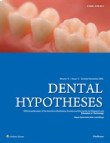Risk-averse purchasing behavior of female dentists and innovation in dental practice
Author(s):
Abstract:
Introduction
The aim of this study was to see if there was any correlation between the variables of age, gender, practice location and longevity, and type of practice on the risk-taking behavior of dentists in Connecticut. Risk-taking behavior was defined as the willingness to adopt new technologies. A questionnaire was used to gather data, and a series of questions were then posed to estimate the degree to which the responding dentists would be willing to implement the technology into their practices.Materials And Methods
Three hundred Connecticut dentists were randomly selected from a list of dentists that was provided by Benco Dental Supply Company. A questionnaire was written and mailed to all 300 dentists with a return envelope inside. One hundred twenty-nine dentists responded. The questionnaire contained questions to gather demographic information about the respondents. It posed a hypothetical situation that described a new imaging technology that was recently brought into the market. The only differences between this technology and current imaging machines were that it did not emit any radiation, and it was twice as expensive as comparable imaging technologies. A risk score was calculated based on the responses to the three main questions. Those who would adopt the technology quickly or immediately received higher risk scores, and those who would wait or would not buy the technology at all received low risk scores. The data were then analyzed with SPSS software to detect if there were statistically significant differences between different groups of dentists. Results
Male dentists were found to have higher risk scores than their female counterparts. Men in the 30-39-years age range had the highest risk scores, while women in this age range had the lowest. As age increased, the difference between the sexes decreased. Specialists were found to have higher risk scores compared to general dentists of the same gender; however, male general dentists still had higher risk scores than female specialists and general practitioners. Risk score also correlated with population density. As the population density of the practice location increased, so did the average risk score of the responding dentist. Conclusions
The results of this study provide evidence that there is a potential correlation of age, gender, practice location, and type of practice with the risk propensity of the responding dentist. There was less of a relationship found between practice longevity and risk score. Unfortunately, the sample size was too small to provide statistically significant correlations. Further research would be needed to explore these potential relationships, by surveying a larger population.Language:
English
Published:
Dental Hypotheses, Volume:6 Issue: 2, Apr-Jun 2015
Pages:
53 to 59
magiran.com/p1410308
دانلود و مطالعه متن این مقاله با یکی از روشهای زیر امکان پذیر است:
اشتراک شخصی
با عضویت و پرداخت آنلاین حق اشتراک یکساله به مبلغ 1,390,000ريال میتوانید 70 عنوان مطلب دانلود کنید!
اشتراک سازمانی
به کتابخانه دانشگاه یا محل کار خود پیشنهاد کنید تا اشتراک سازمانی این پایگاه را برای دسترسی نامحدود همه کاربران به متن مطالب تهیه نمایند!
توجه!
- حق عضویت دریافتی صرف حمایت از نشریات عضو و نگهداری، تکمیل و توسعه مگیران میشود.
- پرداخت حق اشتراک و دانلود مقالات اجازه بازنشر آن در سایر رسانههای چاپی و دیجیتال را به کاربر نمیدهد.
In order to view content subscription is required
Personal subscription
Subscribe magiran.com for 70 € euros via PayPal and download 70 articles during a year.
Organization subscription
Please contact us to subscribe your university or library for unlimited access!


